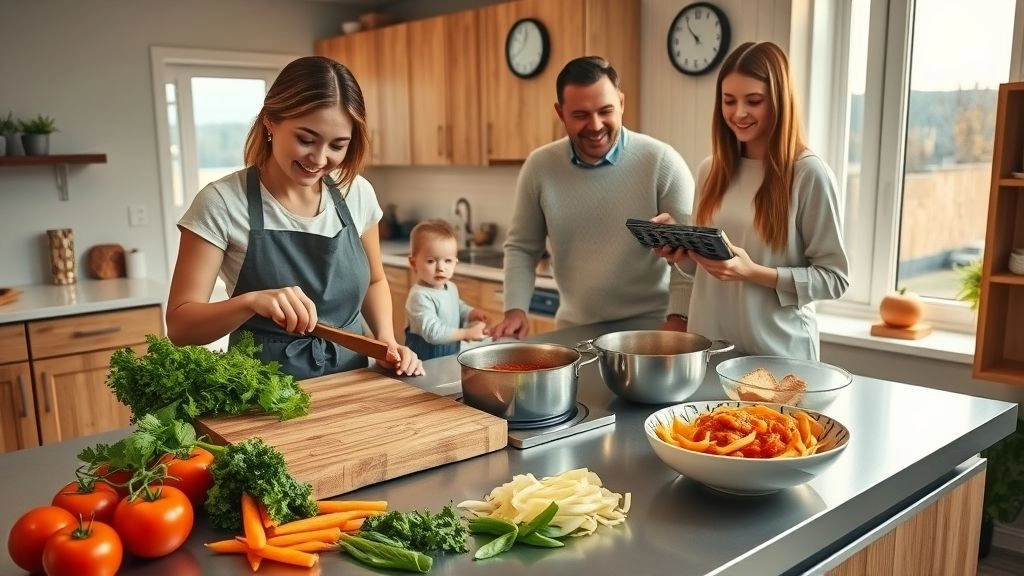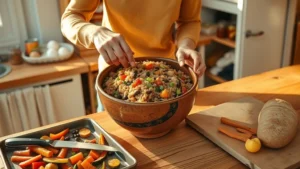Have you ever had that moment where you check your bank app after a week of grabbing takeout and… yikes? It hits differently, right? Managing your money wisely isn’t just about the math—it’s about this mix of relief, control, and yeah, some pride when you know you’ve got your stuff together. In 2025, food prices are creeping up (USDA says by about 1.9% this year), which makes the choice between eating out and cooking at home feel more like a mini financial battle.
So, how much are you really saving—or spending—when you choose your kitchen over a restaurant table? Let’s deep dive into the Cost of eating out vs cooking at home in 2025, and figure out what this means for your wallet and your plate.
Price Gaps Widen
Why Does Eating Out Cost So Much More?
Look, it’s nothing new to say eating out is pricier, but the gap has really blown up lately. Restaurant prices have been rising steadily—about 3.6% just last year, according to the National Restaurant Association. Meanwhile, grocery prices only inched up 1.6%. That means your favorite burger joint or that casual dinner date is becoming a bigger dent in your budget than your local grocery trip.
Here’s a quick reality check: data shows your average home-prepared meal costs about $4-6 per person, while eating out usually runs $15-20 or more. That’s easily a $10 difference each meal.1
| Meal Type | Average Cost per Person (2025) | Estimated Annual Savings (Family of 4, Eating Out 3x/Week) |
|---|---|---|
| Home-Cooked | $4 – $6 | $3,000+ |
| Fast Food | $10 – $15 | |
| Full-Service Restaurant | $15 – $20+ |
And yep, that adds up. A family can fork out thousands more per year just by choosing to eat out more than cooking at home. Now, you might think time is money—sure—but getting clever with meal prep and shortcuts can seriously trim cooking time and keep your wallet happy too.
What’s Driving These Changes?
It’s not just inflation. Think staffing shortages, supply chain hiccups, delivery fees, tips, taxes… all adding layers to your restaurant bill. And when you factor in tips and delivery costs, that meal out suddenly feels even heavier on your budget.
If you want a thorough breakdown, check out eating out vs eating at home pros and cons for a full picture on factors that might surprise you.
Not Just Dollars
Why Cooking at Home Feels Better (Really!)
Money saved is great, but let’s talk real for a sec—the emotional side of cooking at home matters too. Having control over ingredients, sharing mealtime with family, or even that fun process of trying new recipes can lift more than your spirits—it can lift your whole budget without feeling like a sacrifice.
Studies show 89% of people feel home cooking is healthier and a way to save money. Plus, 83% say saving money is more important this year than ever before.3 Have you noticed how weekends in the kitchen can sometimes turn into stories you tell years later?
Speaking of stories… remember how my cousin started batch cooking Sundays? She’d cook once, eat all week, and suddenly, weeknight chaos disappeared along with her overspending on takeout. Whether it’s healthier eating or reclaiming family time, cooking at home has perks beyond just your bank balance.
Health, Taste, and Satisfaction
Want to know the kicker? When you eat out, those “hidden” calories, sodium, and fats sneak in without you noticing. At home, you call the shots—fresh ingredients, smaller portions, and seasoning that won’t break your health bank.
For a well-rounded look at how buying deli or dining at home stacks up side-by-side, you should peek at the eating at home vs eating out essay. It’s a refreshing read that breaks down the lifestyle and financial impacts of both choices.
Quick Wins for Busy Days
Not Enough Time? No Problem
Look, nobody’s saying you need to become a full-time chef or slave over a stove for hours. The secret to saving isn’t cooking every single meal from scratch but making smarter choices.
Think semi-homemade: use pre-chopped veggies, ready-made sauces, or even meal kit services if that suits your schedule. Batch cooking? Game changer. Prep once, eat twice (or more). It’s like giving your future self a big high-five.
The difference between meal kits, takeout, and scratch cooking might be surprising once you toss in time costs. Some research hints that if you don’t cook smart, delivery can be close in price, once you factor time and convenience, but smart batch cooking and planning can flip that upside down.1
Craving Takeout? Soften That Blow
What about when you can’t resist doorbell delivery? Try cutting back to once a week instead of three. Customize orders to avoid unnecessary add-ons, and hunt for coupons or loyalty deals — yes, that actually works!
Food delivery is booming (Canada’s expected 51% growth by 2030, for example), but planning your eating habits around value times (like lunch specials) or bringing a favorite dish from home to round out the meal helps balance out costs.
Long-Term Money Gains
Eating Out Less Adds Up Fast
Imagine this: just ditching two restaurant meals a week for home cooking can save you hundreds every month. It’s not just theory—surveys reveal 81% of people want to save on food in 2025, and they know cooking at home is the way to do it.3
Plus, saving money on meals frees up room to pay off debt, build your rainy-day fund, or invest in that little vacation fund you’ve always thought about.
Let’s Look at the Real Numbers
The USDA’s predicted 1.9% increase in food costs this year might feel like a bummer, but since the cost of eating out is going up faster, the relative saving from cooking at home just keeps growing.
According to some hard-hitting research, eating out costs Americans nearly 285% more than cooking at home. That translates to over $13,000 a year if you’re regularly dining out versus sticking to homemade meals.2
Here’s a little nudge: review your food spending for a month—track your restaurant bills and grocery runs—and just see the “aha” moment when you compare the totals. It’s a sweet shocker, I promise.
Extra Tips to Save Big
Turning Kitchens Into Money Machines
Saving money isn’t just about not eating out. It’s about smart shopping, too. Use apps, sign up for grocery loyalty programs, grab those coupons, buy in bulk, and plan around sales.
Remember, it’s a game—an enjoyable one if you let it be! Little wins add up, and suddenly your kitchen feels less like a chore zone and more like your money’s best friend.
If you want to dive deep into how these choices contrast, check Compare and contrast eating at home vs eating out. It’s a solid read covering the full scope of the spending and lifestyle puzzle.
Making It Stick
Shift your mindset from “I have to cook” to “I get to feed myself and my loved ones well, and save money doing it.” One step at a time—maybe one night a week to start—can grow into a new habit without overwhelming you.
And hey, sometimes nibbling on freshly cooked leftovers while binge-watching your favorite show? That’s the kind of win-win 2025 needs.
Wrap Up & Take Action
So, what’s the real deal with the cost of eating out vs cooking at home 2025? It’s clear: cooking at home saves serious cash, cuts food inflation’s sting, and adds healthy, satisfying moments you can’t get from takeout.
Think about that $16 restaurant meal versus $4 at home—multiply that by several meals, weeks, months, and suddenly you’re looking at thousands saved. Beyond the money, you get healthier meals and more time connected with people who matter.
Here’s a little friendly challenge: pick one meal this week to swap out from dining or ordering in to cooking at home. Track how it feels, what you saved, and if you enjoy it, try again. It’s all about small steps that stick.
What do you think? Are you ready to get back in the kitchen and save some serious cash? If so, check out resources like eating out vs eating at home pros and cons or the eating at home vs eating out essay for more ideas and inspiration.
Here’s to 2025 being your year of frugal food wins—one meal at a time.













